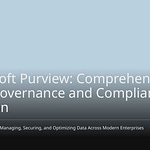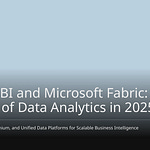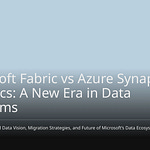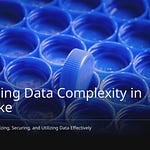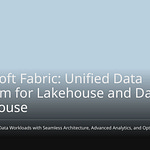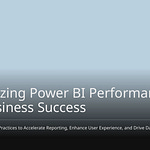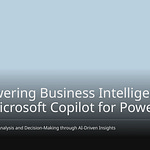You have lots of complex data. It is hard to understand it all. Microsoft Fabric helps with this. It is one smart platform. It makes data analysis easy. It helps businesses make good choices. Businesses want to be better than others. The market for data tools will be worth $4.25 billion in 2025. This shows how important it is. Microsoft Fabric prepares your data for the future. We will explain Microsoft Fabric simply. This blog shows why it is good for your business. It helps you make choices using data.
Key Takeaways
Microsoft Fabric brings all your data tools into one place. This makes data tasks simple.
OneLake is like a central hub for all your company’s data. It makes data easy to find and share.
Fabric uses AI tools like Copilot to help you work faster. It makes smart choices easier for everyone.
Fabric helps your business by breaking down data walls. This gives you a full view of your company.
Using Microsoft Fabric can save money and make things less complex. It helps your team use data better.
Explaining Microsoft Fabric: The Unified Platform
Microsoft Fabric is a full analytics platform. It brings all your data tools together. You get a complete solution for your data needs. This unified data analytics platform makes working with data simple. You do not need many different services. Microsoft Fabric puts them into one easy system. This makes your data tasks much simpler.
All-in-One Analytics for Business
Microsoft Fabric is your single solution for data analytics. It covers everything. This goes from moving data to getting smart ideas. You can handle data movement, data science, real-time analytics, and business intelligence. All of this is in one place. This unified data platform helps you manage your data easily.
Think of it as a main spot for all your data jobs. You get tools like:
Power BI: This helps you make interactive charts and dashboards. You can share your ideas easily.
Data Factory: It moves and changes data from over 200 places. This is modern data integration.
Data Engineering: You use Apache Spark to work with big datasets. This includes notebooks for data changes.
Data Science: You can build and use machine learning models. This helps you make guesses.
Data Warehouse: This gives you top SQL speed. It stores and looks at large amounts of data.
Real-Time Intelligence: You can look at data as it comes in. This gives you instant ideas from things like IoT sensors.
This complete analytics platform joins many strong services. It brings together Azure Data Factory, Power BI, and Azure Synapse Analytics. This means you have smooth data movement, changes, and viewing. This joining makes things less complex. You do not manage many separate services. Microsoft Fabric works as a data fabric platform. It joins and simplifies data integration, storage, processing, and analytics. This is true across your business. It helps everyone who works with data. Data engineers, data scientists, and business analysts all find tools they need.
OneLake: Your Central Data Hub
At the center of Microsoft Fabric is OneLake. Think of OneLake as your company’s single data lake. It is a main place for all your data. This makes your data easy to get and manage. OneLake is built on Azure Data Lake Storage Gen2. It stores data in an open Delta Parquet format. This means different analytics engines can use the same data.
OneLake offers many good things:
Breaks Down Data Silos: It puts all your data in one spot. This means less copying. It also makes managing easier.
Strong Security: You get many layers of security. You can set who can see what. This is for workspaces or single items.
Shortcuts: You can share data between teams. You do not need to copy it. This saves space. It also makes sure everyone uses the newest info.
File Explorer Integration: You can look at and manage OneLake data. You can do this right from Windows. This makes it easy for everyone to use data.
Scalability: OneLake handles big and growing datasets. It helps with good machine learning and data analytics.
OneLake also makes sure data is well-managed. It keeps detailed records. You can see where your data comes from. You can also see how it changes. It has strong data protection. This includes access rules and encryption. You can also approve datasets. This helps make sure data is good. OneLake helps you manage your data. It shows you what data you have. It also helps you find old data. This lowers upkeep costs.
AI Integration for Smarter Insights
Microsoft Fabric uses AI. This gives you smarter ideas. AI is built into the platform. This helps both tech and non-tech users. You can use AI to make your data analytics stronger.
One main AI feature is Copilot. This is an AI helper. It helps you build data flows. It can write code. It also helps you make pictures of data. You can use normal words to tell Copilot what you want. This makes AI easy for more teams. It helps you put smart ideas into your work. This leads to faster choices.
Microsoft Fabric also has Real-Time Intelligence. This mixes AI with live data. You get full ideas right away. This is key for businesses that need constant updates. For example, you can track stock levels. Or you can track customer actions right away. AI models update by themselves with changes. This makes sure your ideas are always current. This solution makes work simpler. It makes everyone faster.
Fabric Data Agents are like smart helpers. They let business users ask questions about data. They use normal language. These agents connect to over 200 data sources. They use Fabric’s strong tools. They also work with Azure AI Agent Service and Azure OpenAI Service. This makes hard data tasks easy for many users.
Microsoft Fabric also uses Azure AI Foundry. This gives you access to over 1,800 AI models. It is a single platform for building AI apps. You can try out and use models. This helps you build generative AI apps. You can also use Azure Machine Learning. This helps data science teams build models. These are for guessing or predicting customer actions. You can put prediction tools into your work. This makes business results better.
Microsoft Fabric: Driving Business Value
Microsoft Fabric helps your business. It offers many good things. You can use your data better. This platform makes your business smarter. It also makes it work better. You can make good choices with it.
Breaking Data Silos for Holistic Views
Your business has data. It is in many places. These are called data silos. They make it hard to see everything. Microsoft Fabric fixes this. It brings all your data together. Fabric puts data from many places. It goes into one central data lake. This lake is called OneLake. You can link this data. It goes to many tools. Power BI is one tool.
Fabric uses Synapse Endpoint. This lets you ask questions. You use SQL for your data. You do not need to learn new things. You do not need to switch tools. Developers, analysts, and data engineers can work. They use the same data easily. Fabric also makes virtual pointers. These point to your data. You do not move much data. The data stays where it is. It still looks like it is in Fabric. This is good for big datasets. It works if your data is in different clouds.
OneLake puts everything in one spot. It makes finding data easy. Sharing and managing data is easy. You have one copy of your data. You can share it with shortcuts. You do not need to copy it. All data is in Delta-Parquet format. This means different tools can use it. One security model works for all tools. This keeps your data safe. It keeps it the same. This way of working breaks data silos. It gives you a full view of your business. This full view helps you make choices. You base them on facts. Not just on guesses. It makes your business operations better. You can know your customers more. You can find new ways to create. You can guess future trends better. This helps you plan for items. It also helps with marketing.
Accelerating Data-Driven Decision-Making
Making quick, smart choices is key. It is key for your business. Microsoft Fabric helps you do this. It makes the process faster. From getting data to getting ideas. The platform uses a lake-first way. It stores all your data in lakehouses. This makes sure your data is right. It is ready for looking at. It also cuts down on copied data. You get one true source. This can make data more correct by 25%.
Fabric uses AI and automation. Tools like Copilot automate data tasks. They also give useful ideas. This helps you make choices faster. Low-code and no-code tools are in Fabric. These tools let non-tech people work. They can do data analysis easily. This means more people can make choices. They use data. Fabric makes your work smoother. It automates tasks. You used to do them by hand. This makes your work better. Companies say they save 35% time. This is on data tasks.
Fabric has strong analysis tools. Power BI helps you make reports. They are interactive. Azure Synapse Analytics handles big data. Azure Data Factory moves data. It changes data. Real-Time Intelligence gives instant ideas. These tools help you see your data. You see it clearly. You can use charts and graphs. You can change them. Copilot in Power BI uses AI. It makes pictures from your questions. This makes looking at data simple. Fabric also has AI features. It puts AI with data tools. This makes handling data easier. It makes it better. Copilot helps you work faster. It gives ideas right away. It automates tasks. This is in Power BI and Data Factory. This helps you build data pipelines faster. It is 30-50% faster. You can also make reports faster. It is 40-60% faster. Fabric processes data very fast. Simple tasks are very quick. Complex analysis is quick too. This means you can see trends fast. You can automate complex work. You get ideas about the future. There is very little delay.
Reducing Costs and Complexity
Managing many data systems costs money. It is also hard. Microsoft Fabric makes your data simpler. This cuts down on costs. It puts many systems into one. You do not need to manage many parts. This includes planning and fixing. Your IT team can do more important work. Fabric is already connected. This means you can use data tools fast. It often takes days. Not months. You can react to new business needs faster.
Fabric has a single way to manage. This makes sure data rules are followed. It lowers risks. These are about following rules. Its cloud design means it can grow. It grows with your needs. It handles changing needs. It handles more data. Fabric is a cloud service. It updates itself. It is always working. It connects well with Microsoft 365 and Azure. This links data ideas to your business.
Fabric’s service model updates itself. It fixes security issues. This means less work for IT. They can focus on new ideas. Centralized management makes data access fair. It also checks things automatically. This lowers security risks. Fabric combines many services. You do not need to keep separate systems. This saves money and effort. The single platform brings all data parts together. It makes work smoother. It removes connection problems. This makes development faster. OneLake makes data storage easy. It makes access easy. It works with many data types. It allows real-time analysis. You do not move data by hand. This makes things less complex. Fabric also makes data connection easy. It uses Azure Data Factory. It offers visual tools. You do not need to code. It connects to many data sources. This means fewer engineers are needed. Fabric automates data flow. It handles changes. It fixes errors. This makes data flow reliable. It reduces manual work. Fabric changes how ETL works. It changes data in OneLake. You do not need temporary areas. This makes things much simpler. It costs less. It allows faster pipeline building.
Empowering Business Users
Microsoft Fabric helps everyone in your business. It lets them use data. They can look at it themselves. This means fewer special data teams are needed. This is for daily analysis. Fabric has an easy-to-use look. It lets business users look at data. They can make pictures. They can get ideas. This happens within rules set by IT. This means less work for your IT team.
Power BI is a big part of Fabric. It is a business analysis tool. It helps you make interactive pictures and reports. Power BI lets you change data. It lets you look at it. It lets you see it. It comes from many places. It helps with different kinds of analysis. These include describing, finding problems, guessing, and suggesting. Power BI has tools you can change. These are charts and graphs. They give you ideas right away. Fabric wants to help non-tech workers. It puts many Microsoft Azure tools together. It gives you the right tools. These are for getting data. For working with it. For looking at it. It is safe and easy to use.
Fabric’s easy design makes working together simple. It also lets people look at things themselves. Its self-service tools let users look at info. They do it on their own. This means they do not need special data teams. Fabric has AI tools. Copilot in Power BI and Data Factory helps get ideas faster. It makes data analysis open to everyone. These tools let users talk to data. They use normal words. You do not need to know a lot of tech stuff. This makes getting ideas from data much faster. More employees can make smart choices. They use data. This means more people can use AI. Business users can do their own analysis. They can get ideas using easy AI tools. This means they do not always need central BI teams. These special teams can then work on harder projects.
Fabric in Action: Strategic Impact for 2025
Enhancing Customer Experiences
You can make customers happier. Microsoft Fabric helps you. It helps you know them better. Fabric tracks what people do. It sees what they view. It sees what they add to carts. This is on your website. Fabric makes profiles for all visitors. This includes new ones. It adds these to old profiles. This gives you a full view. You see each customer clearly. You can use AI chatbots. These answer questions. They suggest products. They use your company’s data. This makes experiences personal. Microsoft Fabric also uses Dynamics 365. This helps combine customer data. You see what they buy. You see what they like. This helps guess if they will leave. It helps set prices. These ideas help you choose better.
Optimizing Operations
Microsoft Fabric helps you run things better. It gives you real-time facts. You see what is happening now. In factories, you watch machines. You find problems fast. This makes more products. It cuts down on waste. For oil and gas, you watch drilling. You manage equipment health. This makes things work better. It cuts down on stops. Fabric uses data from many places. This includes machines and sensors. It uses EventHouse for this. Synapse Real-Time Analytics finds slow spots. It makes watching production better. This can cut stops by 18%. It makes workers 30% better. This helps you choose faster.
Fostering Innovation
Microsoft Fabric helps you make new things. It helps new ideas grow. You can mix different data. This gives you one platform. This helps you make new services. For example, a bank can use customer data. They can offer special money products. Fabric has smart AI tools. These help you find ideas. They come from complex data. Trading places can use live data. This helps them trade faster. This makes new fast trading products. Fabric works with Microsoft AI. This includes Azure Machine Learning. Money firms can build models. These give personal investment ideas. This makes new advice services. Copilot in Microsoft Fabric helps build dataflows. It writes SQL code. It also makes reports. It makes machine learning models. This makes your analysis faster. This platform helps use data for AI. It makes analysis smooth. It uses one set of tools. This helps people work together. It makes things flexible. It also cuts costs and risks.
Ensuring Data Governance
You must keep your data safe. It must follow rules. Microsoft Fabric helps you do this. It has strong data rules. These include an Admin Portal. It has Workspaces. It has approval steps and tags. Fabric works with Microsoft Purview. This helps sort and protect private data. It follows rules like GDPR and HIPAA. Fabric makes data maps automatically. This helps you see where data came from. This is key for checks. Access controls let you pick who sees data. This stops bad use of private info. The platform records how data is used. This helps you watch data access. Microsoft Purview DLP protects private patient data. This helps health groups follow HIPAA. Fabric’s security uses Entra Groups and Roles. It also uses row and object security. This keeps all data safe.
Microsoft Fabric is one platform. It uses AI. It changes raw data. This data becomes smart ideas. It helps your business. We see Fabric as a full answer. It helps you join data. It makes choices faster. This platform saves money. It helps your team. They get strong tools. Using Fabric is important. It helps your business grow. This is for 2025 and later. You should check out Fabric. It uses AI. It helps you stay ahead.
FAQ
What is Microsoft Fabric?
Microsoft Fabric is a full data platform. It gathers all your data tools. You use it to move, save, change, and check your data. This one platform helps you make better business choices. Fabric makes your data work easy from start to end.
How does Fabric help my business?
Fabric helps your business by joining data. You see all your work clearly. It makes choices faster with AI. You also spend less and make things simpler. Microsoft Fabric helps your team use data well. This creates new ideas and makes customers happier.
What is OneLake in Microsoft Fabric?
OneLake is your main data spot in Microsoft Fabric. It is like your company’s one data lake. It keeps all your company’s data in one place. This makes your data simple to get and handle. OneLake makes sure everyone uses the same, right data.
Is Microsoft Fabric hard to use?
No, Microsoft Fabric is made to be easy. It has tools that need little or no code. AI tools like Copilot help you with jobs. You can make data flows and reports with simple words. This lets more people in your company look at data.



